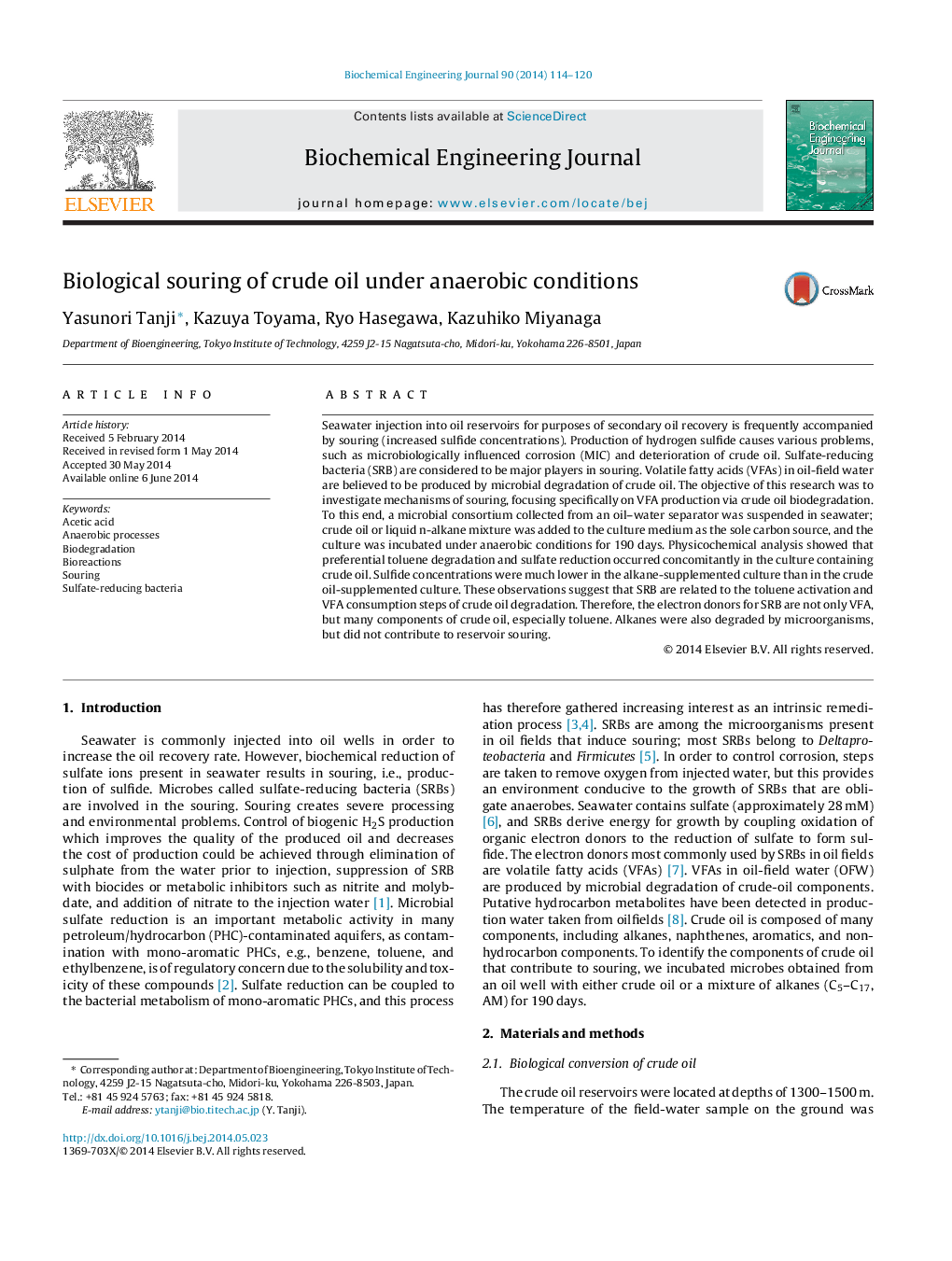| کد مقاله | کد نشریه | سال انتشار | مقاله انگلیسی | نسخه تمام متن |
|---|---|---|---|---|
| 2999 | 147 | 2014 | 7 صفحه PDF | دانلود رایگان |
• Souring was realized by incubating crude oil under anaerobic condition.
• Toluene in crude oil was consumed selectively.
• SRBs and fermentative bacteria were identified.
Seawater injection into oil reservoirs for purposes of secondary oil recovery is frequently accompanied by souring (increased sulfide concentrations). Production of hydrogen sulfide causes various problems, such as microbiologically influenced corrosion (MIC) and deterioration of crude oil. Sulfate-reducing bacteria (SRB) are considered to be major players in souring. Volatile fatty acids (VFAs) in oil-field water are believed to be produced by microbial degradation of crude oil. The objective of this research was to investigate mechanisms of souring, focusing specifically on VFA production via crude oil biodegradation. To this end, a microbial consortium collected from an oil–water separator was suspended in seawater; crude oil or liquid n-alkane mixture was added to the culture medium as the sole carbon source, and the culture was incubated under anaerobic conditions for 190 days. Physicochemical analysis showed that preferential toluene degradation and sulfate reduction occurred concomitantly in the culture containing crude oil. Sulfide concentrations were much lower in the alkane-supplemented culture than in the crude oil-supplemented culture. These observations suggest that SRB are related to the toluene activation and VFA consumption steps of crude oil degradation. Therefore, the electron donors for SRB are not only VFA, but many components of crude oil, especially toluene. Alkanes were also degraded by microorganisms, but did not contribute to reservoir souring.
Journal: Biochemical Engineering Journal - Volume 90, 15 September 2014, Pages 114–120
